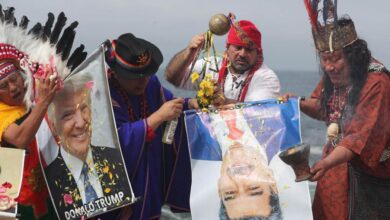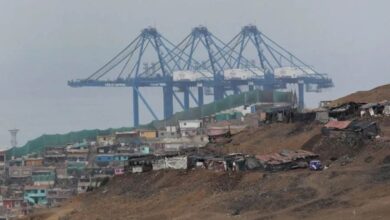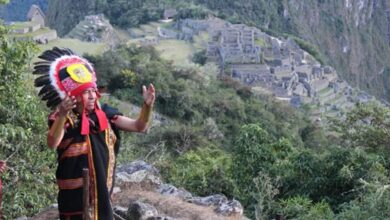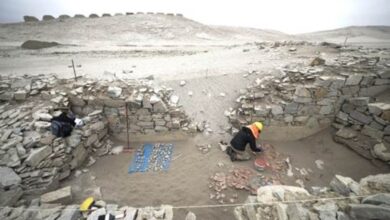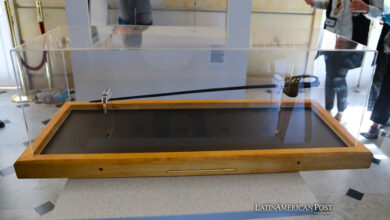Alberto Fujimori: A Controversial Legacy that Shaped Modern Peru
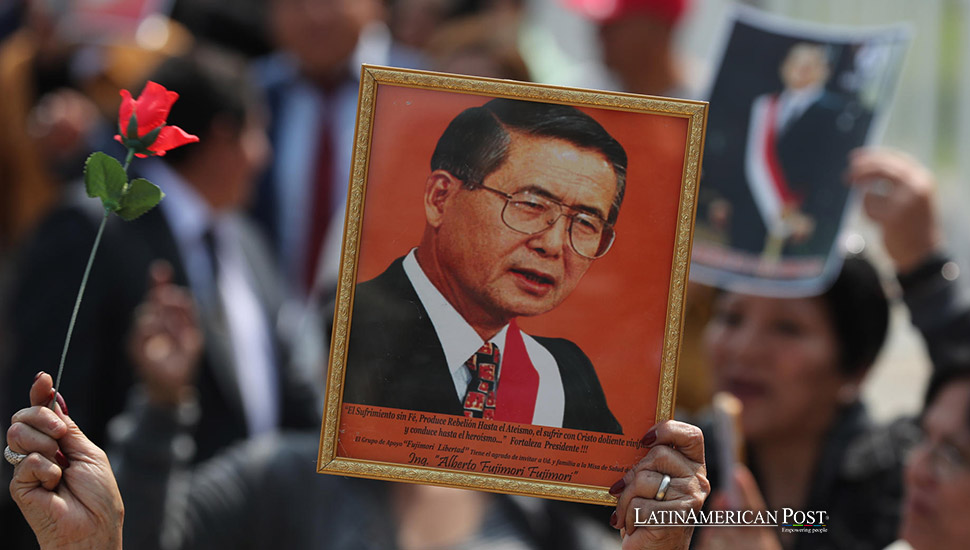
Former Peruvian President Alberto Fujimori, who passed away at age 86 after a long battle with cancer, leaves behind a complex and profoundly polarizing legacy. Celebrated for his role in defeating the Shining Path insurgency yet condemned for his human rights abuses, his impact on Latin America remains significant.
Alberto Fujimori’s rise to power was as unexpected as it was dramatic. Born to Japanese immigrant parents in 1938, Fujimori was a university professor without political experience when he ran for president in 1990. His candidacy was seen as an outside shot in a country reeling from political and economic instability. Hyperinflation had reached staggering levels, and the Maoist insurgency of the Shining Path threatened the very fabric of Peruvian society.
Fujimori’s background as an academic and technocrat initially set him apart from the traditional political class. His populist campaign connected with voters who were fed up with the corruption and inefficacy of previous administrations. His victory in 1990 marked the beginning of a turbulent decade for Peru, with Fujimori navigating the country through economic collapse and an escalating civil conflict.
He inherited a nation on the brink of total collapse. Inflation had skyrocketed to nearly 7,500%, and the Shining Path guerrilla group, led by Abimael Guzmán, had orchestrated a reign of terror across the country, with bombings and assassinations becoming part of daily life. Fujimori’s administration set out to tackle these dual crises, but his methods would forever define his legacy—better and worse.
The “Fujishock” Economic Reforms
Fujimori’s early years in office were dominated by his radical economic reform program, known as the “Fujishock.” Plagued by hyperinflation and massive debt, Peru’s economy needed an immediate remedy. Fujimori turned to neoliberal reforms, slashing government spending, eliminating subsidies, and opening Peru’s markets to foreign investment. Though painful in the short term, these measures eventually stabilized the economy and controlled inflation.
However, these drastic economic policies also had a human cost. For many Peruvians, particularly those in poor and rural communities, the Fujishock represented an era of severe austerity and hardship. Prices soared for essential goods, and poverty levels increased before the reform’s benefits were felt. Despite the difficulties, Fujimori’s economic measures garnered praise from international financial institutions like the International Monetary Fund and the World Bank, which saw Peru as a model for how a country could emerge from an economic abyss.
Fujimori’s ability to tame inflation and attract foreign investment earned him support from Peru’s urban middle class and international allies. But while his economic policies gained him recognition, they were only a prelude to the battles ahead with the Shining Path, the Maoist insurgency that had plunged Peru into chaos.
The War Against the Shining Path
Perhaps Fujimori’s most defining—and divisive—achievement was his ruthless campaign against the Shining Path. The insurgency, which began in the early 1980s, had paralyzed the country with terror tactics, including assassinations, bombings, and the targeting of government officials. By the time Fujimori took office, the Shining Path was on the verge of toppling the state.
Fujimori’s strategy was direct and brutal. In 1992, he executed an autogolpe, or self-coup, dissolving the Peruvian Congress and assuming extraordinary powers, including control over the military and judiciary. This allowed him to launch a full-scale military offensive against the Shining Path, and by September of that year, the government had captured its leader, Abimael Guzmán. The capture of Guzmán was a turning point in the war, effectively crippling the insurgency.
However, the victory came at a steep price. Fujimori’s administration was accused of gross human rights violations during the campaign, including extrajudicial killings, forced disappearances, and the establishment of death squads that targeted not only insurgents but also civilians, particularly in indigenous and rural communities. One of the most infamous episodes was the Barrios Altos massacre in 1991, where 15 civilians, including an 8-year-old boy, were killed by a death squad linked to Fujimori’s regime.
Although his supporters credit him with saving Peru from the brink of collapse, the human toll was staggering. Nearly 69,000 people died during the conflict, and many of those deaths occurred under Fujimori’s crackdown on the insurgents. For many in Peru, particularly among the indigenous population, Fujimori’s legacy is marred by these atrocities.
Fall from Grace and the Road to Exile
As the 1990s progressed, Fujimori’s authoritarian tendencies began to overshadow his earlier successes. In addition to cracking down on insurgents, he increasingly concentrated power in his own hands, marginalizing the judiciary and silencing opposition. His reliance on his intelligence chief, Vladimiro Montesinos, further tainted his administration. Montesinos, who was later revealed to be deeply involved in corruption, was a key figure in controlling the media and suppressing dissent.
The public’s perception of Fujimori began to shift as revelations of corruption and abuse of power surfaced. In 2000, Fujimori won a controversial third term in office, but his victory was tainted by widespread allegations of electoral fraud. Faced with mounting opposition and corruption scandals, he fled to Japan during an official visit to Asia, resigning from office via fax. It was an ignominious end for a man who had once been hailed as Peru’s savior.
For years, Fujimori lived in exile in Japan, where he sought asylum, protected by his dual citizenship. However, in 2005, during a visit to Chile, he was arrested and extradited to Peru to face charges of corruption and human rights abuses. In 2007, he was convicted of ordering the Barrios Altos and La Cantuta massacres, as well as other human rights violations. The trial marked a historic moment for Peru, as it was one of the few times a former head of state had been held accountable for such crimes in Latin America.
Fujimori was sentenced to 25 years in prison, a sentence that was hailed by human rights groups as a victory for justice. Yet, even in prison, Fujimori remained a polarizing figure. His supporters continued to view him as the man who saved Peru from the brink of destruction, while his detractors saw him as a tyrant who had trampled on the country’s democratic institutions.
A Divided Legacy in Latin America
Alberto Fujimori’s death in 2024, after a long battle with cancer, brought an end to a deeply controversial chapter in Peruvian history. His passing was met with mixed reactions—his supporters gathered to mourn the man they saw as a national hero, while others recalled the dark period of human rights abuses under his regime.
Fujimori’s impact, however, extends beyond the borders of Peru. His presidency was emblematic of the broader struggles that many Latin American countries faced during the 20th century—battles against insurgent groups, the challenge of maintaining democratic governance, and the deep-rooted issues of corruption and inequality.
Fujimori’s economic policies, while neoliberal in nature, reflected the global trend of the 1990s toward market-oriented reforms. Countries like Argentina, Brazil, and Mexico also underwent similar economic overhauls during this period, seeking to integrate into the global economy. Fujimori’s success in stabilizing Peru’s economy was seen as a model for other nations facing similar crises, even if the social costs of his reforms were profound.
Moreover, his battle against the Shining Path insurgency was part of a broader narrative in Latin America’s fight against left-wing guerrilla movements. Countries like Colombia, Guatemala, and El Salvador also faced brutal insurgencies during the latter half of the 20th century, and in many cases, governments resorted to similar tactics—military crackdowns, death squads, and widespread human rights abuses. Fujimori’s legacy, in this sense, is emblematic of the delicate balance between security and justice that continues to haunt Latin America.
For Peruvians, Fujimori’s legacy is likely to remain a point of contention for generations. His daughter Keiko Fujimori, now a prominent political figure in her own right, has continued to champion her father’s legacy, positioning herself as the leader of his political movement. Yet, her political ambitions have been hampered by the lingering divisions over her father’s presidency, as well as her own legal troubles.
Also read: The Legacy of Sérgio Mendes: Brazil’s Iconic Musical Ambassador
As Peru looks ahead, the nation remains deeply shaped by Fujimori’s time in office. Whether viewed as a hero or a villain, there is no doubt that Alberto Fujimori forever changed the course of Peruvian—and Latin American—history.

